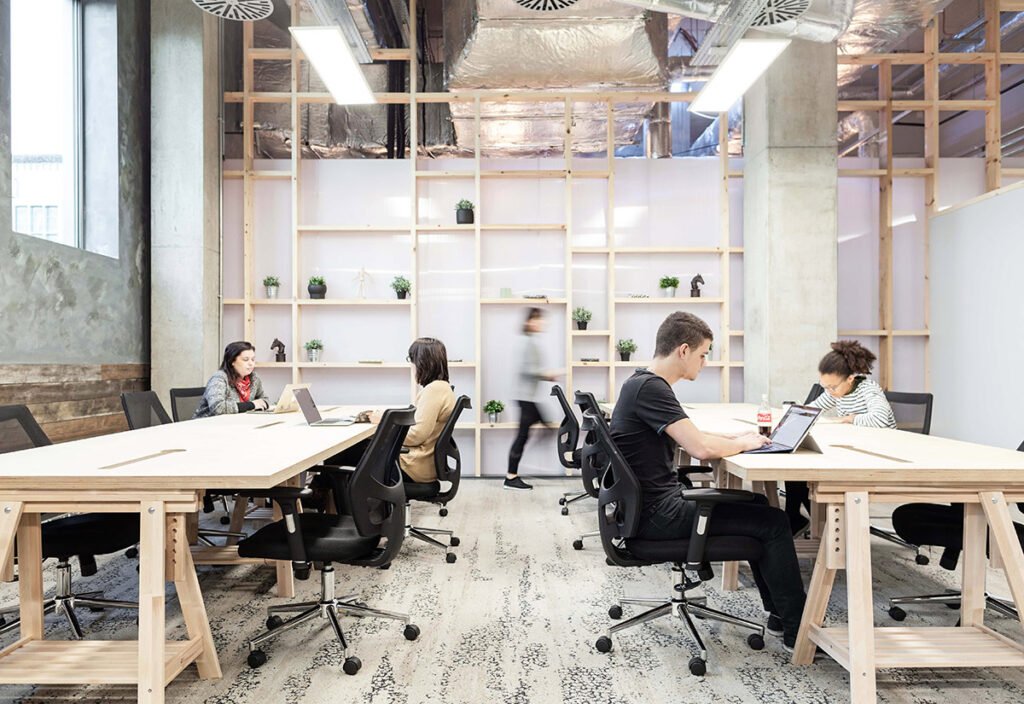
Dubai’s real estate market is evolving faster than ever, and one of the most exciting shifts in recent years is the rise of co-living spaces. Once seen as a niche concept, co-living has now become a mainstream rental trend attracting young professionals, entrepreneurs, and digital nomads from around the world. This modern lifestyle solution is redefining how residents experience community, convenience, and cost-effective living in one of the world’s most dynamic cities.
Co-living spaces are shared living environments designed to provide private rooms along with common areas like kitchens, lounges, coworking zones, and fitness facilities. They’re built around the idea of community-driven living, where residents share resources and experiences while maintaining their independence.
In Dubai, these spaces often come fully furnished, with utilities, housekeeping, and Wi-Fi included in one monthly fee—making them a smart choice for people who value simplicity and social interaction.
The concept of co-living aligns perfectly with Dubai’s cosmopolitan identity. The city attracts professionals from over 200 nationalities, many of whom move here temporarily for work or business opportunities. For them, traditional long-term leases often feel restrictive. Co-living provides the flexibility and affordability that this global crowd demands.
Over the past few years, Dubai has witnessed a surge in co-living projects, particularly in areas like Jumeirah Village Circle (JVC), Business Bay, Dubai Marina, and Al Barsha. Real estate developers and operators are reimagining urban living by combining modern architecture with vibrant community spaces and tech-enabled convenience.
For Dubai’s millennial population and expatriate community, co-living isn’t just about saving money—it’s about living smarter.
Here’s why the trend resonates with them:

Dubai’s rental market can be expensive, especially in central areas like Downtown or Marina. Co-living provides an alternative where tenants enjoy prime locations without stretching their budgets. For developers, it’s a profitable model too. By optimizing space and offering shared facilities, they can accommodate more residents within the same footprint—boosting yields while keeping rent affordable.
Moreover, the demand for short-term flexible accommodation continues to rise as remote work and digital nomad visas become more popular. Co-living operators are tapping into this trend by offering subscription-based stays, allowing residents to move between cities or neighborhoods without breaking leases.
While co-living is spreading across the city, some areas have emerged as hotspots due to their mix of affordability, accessibility, and lifestyle perks.
1. Jumeirah Village Circle (JVC)
JVC has become the heart of affordable modern living in Dubai. With a mix of co-living developments, cafes, and wellness centers, it attracts young professionals looking for a social yet calm neighborhood.
2. Business Bay
Perfect for those working in Downtown or the Financial District, Business Bay’s co-living spaces combine urban sophistication with convenience. Many offer coworking areas and skyline views that appeal to digital workers.
3. Dubai Marina
For residents who want the full Dubai experience—beaches, nightlife, and waterfront living—Marina’s co-living options deliver a balance of community and luxury.
4. Al Barsha and Tecom (Barsha Heights)
These areas are ideal for those seeking affordable co-living setups with quick access to metro lines and major business hubs.
The difference between co-living and traditional rentals lies not only in cost but also in experience. Traditional apartments often require year-long leases, large deposits, and furniture investments. Co-living, by contrast, offers move-in-ready rooms with no hidden expenses.
Residents benefit from shared facilities, social events, and cleaning services—turning accommodation into a lifestyle.
Here’s a quick comparison:
| Feature | Co-Living | Traditional Apartment |
|---|---|---|
| Lease Type | Flexible, short-term | Long-term, fixed |
| Furnishing | Fully furnished | Usually unfurnished |
| Bills & Wi-Fi | Included in rent | Paid separately |
| Community | Strong, social focus | Often isolated |
| Move-In Process | Instant, no setup required | Requires setup & contracts |
Tech plays a central role in making co-living efficient and seamless. Most modern co-living buildings in Dubai are equipped with smart access systems, mobile apps for rent payments and maintenance requests, and AI-driven matchmaking to pair compatible roommates.
Operators are also investing in community platforms that allow residents to connect, share events, or even collaborate professionally—blurring the line between living and networking.
As Dubai continues its sustainability drive, co-living fits naturally into the city’s green vision. By encouraging shared spaces and resources, these developments minimize waste and energy consumption. Many projects integrate solar panels, water-efficient fixtures, and eco-friendly materials to align with Dubai’s 2040 Urban Master Plan.
Shared kitchens and coworking areas also reduce duplication of energy-intensive appliances, creating a smaller carbon footprint per resident.

Beyond economics and design, co-living is reshaping how people connect in an urban environment. Living alone can be isolating—especially for expats new to the city. Co-living brings together diverse individuals with shared values and ambitions, fostering collaboration and belonging.
Many co-living operators in Dubai host weekly events, workshops, and community dinners that help residents network, learn, and relax together. This sense of belonging has become one of the strongest attractions of the co-living lifestyle.
From an investor’s point of view, co-living is a high-demand, high-yield model. The consistent turnover of short-term residents ensures steady occupancy rates. As more young professionals move to Dubai, especially under initiatives like the Dubai Talent Pass and remote work visas, the need for affordable yet premium living spaces is bound to rise.
Developers are responding by converting older buildings into co-living hubs or designing new projects dedicated to this concept. With the government’s continued support for housing innovation, the co-living sector is expected to expand significantly over the next decade.
While the concept is thriving, it’s not without challenges. Key issues include:
Despite these hurdles, the overall outlook for co-living in Dubai remains highly positive, thanks to strong demand and lifestyle alignment.
Looking ahead, co-living spaces are expected to become even more integrated with mixed-use developments that combine residential, commercial, and leisure facilities. Imagine living in a space where you can work remotely, socialize downstairs, and enjoy rooftop fitness—all within one community ecosystem.
Future trends may include:
Dubai’s reputation as a global innovation hub ensures that co-living will continue evolving in exciting ways, merging smart living with urban creativity.
If you’re considering joining a co-living community, here’s what to keep in mind:
Co-living spaces represent more than just a rental alternative—they embody the future of urban living. In a city as fast-paced and multicultural as Dubai, people crave both independence and connection, and co-living offers the perfect balance of both.
With affordability, flexibility, and social value at its core, this modern lifestyle trend is here to stay. Whether you’re a young professional looking to build connections or a digital nomad seeking comfort and community, Dubai’s co-living scene offers a lifestyle that’s as dynamic and diverse as the city itself.
Do Follow Estate Magazine on Instagram
Maximize Rental Yield in Dubai: Proven Tips for Smart Investors
